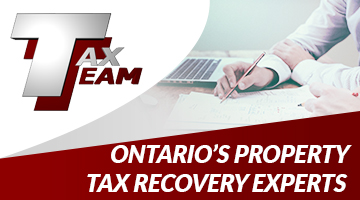There are 10 years until a fully Accessible Ontario – but there are less than 6 years for websites to be compliant. Will you and your website be ready?
https://www.linkedin.com/pulse/6-years-counting-accessible-websites-susan-shannon?trk=prof-post
The Ontario government enacted the Accessibility for Ontarians with Disabilities Act (AODA) in 2005, with a clear goal and timeframe to make Ontario accessible by 2025.
The AODA defines “disability”, and while you should go to the Act to see the full definition, generally a disability can be defined as; any degree of physical disability, infirmity, malformation or disfigurement, blindness or visual impediment, deafness or hearing impediment, muteness or speech impediment, a condition of mental impairment or a developmental disability, a learning disability, or a dysfunction in one or more of the processes involved in understanding or using symbols or spoken language, or a mental disorder.
Under the AODA, there are 5 Accessibility Standards – Customer Service, Information and Communication, Employment, Transportation and Built Environment. For the purposes of our discussion here on making websites accessible, it’s the Accessibility Standard for Information and Communications that we will take a closer look at because it’s the one intended to help Ontario businesses and organizations make their information accessible for people with disabilities.
By January 1, 2021, all “new” internet websites and web content on those sites must conform with WCAG 2.0 Level AA (excluding live captioning and audio description). A “new” website means, a) a site with a new domain name, or b) a site with an existing domain name undergoing a significant refresh (e.g. new look and feel, changes to navigability, majority of content being updates or changed)
Before you panic though, it’s best to go to the legislation and standards themselves to determine if the legislation/standards apply to your business or organization. There are lots of great sites, but here’s a handy site[1] I found.
Once you’ve determined if the Act applies to your business or organization, then the easiest way for you find out what you have to do and when, is to go to the accessibility compliance wizard. The Wizard will give you a personalized summary of what you have to do to comply. The Wizard can be found at www.Ontario.ca/AccessON.
So, what are these WCAG standards?
Simply put, the WCAG guidelines [2] explain how to make web content more accessible to people with disabilities. WCAG 2.0 is an internationally accepted standard for web accessibility developed by the World Wide Web Consortium (W3C), an international team of experts. WCAG 2.0 sets out guidelines for organizations to follow to make their websites more accessible for people with disabilities. The guidelines cover things like writing web content in clear language, providing alternate text for images and making sure someone can navigate your website with just a keyboard. Following these guidelines should make it easier for everyone to access your website and content, including people without disabilities.
Even if the AODA or the Standards do not apply to your business or organization, having an accessible website is a socially responsible thing to do to assist the public and your clients with disabilities.
So how do I go about making my website accessible for those with disabilities?
Well, when you think about website accessibility, there are two main considerations – the way your website is built and the content on it.
Build Your Website
When you build your accessible website keep all your users in mind; those with colour blindness, hardness of or loss of hearing, low vision or blindness, dyslexia, repetitive stress injuries and temporary injuries to name a few. For example, like the image in the link above, don’t use colour contrasts that may be too bold or hard for those with colour-blindness to distinguish. You should also ensure you don’t have navigation and menus that are difficult for screen readers to process, etc.
Accessible Content
Here are some things to consider to make your content accessible[3]:
- Headings/Subheadings – every page must have a brief heading and use subheadings to break up content
- Tables – Use tables to organize content and tables need captions
- Images – Avoid putting text in images because screen readers can’t read it. Use Alt-text and keep the description of the image brief but to the point
- Links – Every link must have alternative text that describes where it goes. Incorporate the links into sentences ( i.e. “Visit www.muniserv.ca today and check out our professional memberships.” not , “To visit muniserv.ca, click here, and to check out our professional membership, click here.“)
- Alt text[4] – be sure you use Alternative text for tables, images, links
- Videos – if you post instructional videos, be sure they are captioned for people with hearing loss
Accessible content is also good content that improves Search Engine Optimization (SEO).
SEO techniques are good for accessibility and elements that make you rank higher in search engines are more easily read by people using screen readers. In addition, keywords in content, headings, etc., play into both SEO and accessibility – plus accessible content adds important words to web pages, which also increases visibility in search engines.
So, remember to build content with all different types of users in mind and keep the content accurate and up-to-date to build trust and improve search engine rankings.
In summary then:
1. Check the AODA and the WCAG Guidelines to determine if/when your business or organization must be in compliance
2. Use the Accessibility Wizard to determine what you need to do and when.
3. Take a look at your website and see if the content currently meets the accessibility standards, and,
4. Talk to your web designer!
Note: This article is provided for information only and is not intended to be legal advice. It is the reader’s responsibility to ensure accuracy of all the information provided.
[1] http://www.mcss.gov.on.ca/en/mcss/programs/accessibility/info_sheets/info_comm/website.aspx [2] http://www.w3.org/WAI/WCAG20/glance/ [3] eSolutions Group – Open Web Accessibility Conference [4] http://webdesign.about.com/od/accessibility/a/great_alt_text.htm

.jpg)





